"George" is the name of my New Year's baby 2023: Kawanishi N1K1-J Shiden /"George"
The fingers of one hand are enough to list the representatives of an extremely rare group of aircraft: those that have been converted from a seaplane to a land plane! If one narrows this group even further to those constructions that have been able to follow up their conversion to a land plane with a successful operational career, the circle becomes really small. The amazing Kawanishi N1K1 Shiden is one of these rare birds and worth a closer look for this fact alone.
About the model
The Kawanishi N1K designation refers to three closely related aircraft types developed from mid-1942 onwards. The N1K1 Kyofu is the initial design of this triplet. Designed as a seaplane from the outset, it was intended to support the offensive operations of the Japanese Empire, which was aggressively expanding at the time, in Pacific theatres of operation. Far from fortified airfields, the Japanese naval forces would thus have air support for amphibious landing operations. This concept seemed to fit the times, as the adaptation of the legendary A6M2 into the A6M2-N Rufe water fighter had created a high-quality fighter that was independent of fortified runways.
The first flight of the new N1K1 Kyofu, completed in May 1942, took place at the height of the Japanese success. However, by the time the N1K1 Shiden was introduced to the troops, the strategic scenario would have changed permanently and decidedly to Japan's disadvantage. By then, in July 1943, the tide had already turned, and securing offensive operations in the Pacific islands was no longer a priority. What Japan's naval air force needed now were contemporary, heavily armed, agile and, above all, powerful aircraft that could at least compete on equal terms with the new generation of enemy carrier aircraft.
Even though the original operational concept had been overtaken by the course of events, it became clear that the N1K1 was a rock-solid and promising design. Incidentally, the fact that the approximately 100 N1K1 Kyofu built were used successfully until the end of the war also speaks for its quality. Combined in a separate unit, they first flew intercept missions from Borneo and later from a lake on the Japanese island of Honshu.
The obvious advantages of the N1K1 had been recognised early on. Remarkably, in the months immediately following the first flight of the Kyofu seaplane, work began on converting the design into a land plane. The early date of the first flight of the N1K1 Shiden, as the land version was called, proves that this was a high priority: on 27 December 1942, the squat-looking fighter took off for the first time on its strikingly long landing gear legs.
Subsequent testing quickly made it clear that an outstanding coup had been achieved. The improvements made to the Shiden over the Kyofu further enhanced the performance of the underlying design. The newly developed Nakajima N9K Homare had been selected as the engine, and its 1990 hp propelled the beefy design to over 580 km/h. The N1K1 was able to translate its massive engine power into extraordinary manoeuvrability, a crucial characteristic whose value was further enhanced by the innovation of automatic flaps, which greatly relieved the pilot in dogfighting.
In the Pacific, range was also of great importance. Here, too, the Shinden excelled with values of 1432 kilometres without or 2335 kilometres with an additional tank. With this range, it was far superior to other contemporary Japanese designs such as the J2M3 Raiden. Finally, the N1K1 Shinden's enormous - and by Japanese standards unusually high - firepower must be mentioned: two 7.7mm MG in the fuselage were supplemented by four 20mm Type 99 cannons in and under the wings to form an armament with impressive firepower.
Given such advantages and the potential they concealed, it is not surprising that the N1K1 Shiden was put into immediate series production. From July 1943, the new fighter was built at the Kawanishi factories in Osaka and Himeji, with a total of 1007 examples of this formidable fighter to be produced by the end of the war.
The speed with which this innovative design was produced and delivered to the front-line units, however, came at a price: the N1K1 had a design weakness that was to plague it throughout its existence - and still had to do with its past as a seaplane. As heir to the Kyofu, the N1K1 Shiden retained its mid-wing design. The performance of the mighty N9K Homare necessitated a large four-bladed propeller, which in turn required long landing gear legs to maintain adequate ground clearance. The technical problems associated with this proved impossible to overcome and were only eliminated with a redesign as a low-wing monoplane.
The engine itself also caused problems. The newly developed twin-star engine had been put into production too hastily, so that the unresolved teething troubles of the immature engine accompanied the N1K1 Shiden in addition to the collapsing landing gear legs.
At least the landing gear problem was solved: almost exactly one year after the N1K1 Shiden had flown for the first time, the new variant N1K2 took off for its maiden flight. This Shiden-Kai design was now a low-wing monoplane. This, together with a much simplified landing gear system, finally solved the permanent problem of collapsing landing gear legs. Furthermore, the fuselage was lengthened by one metre and the tailplane shape was revised. Finally, with about two thirds of new assemblies, an essentially new aircraft had been created, which, however, in its name made clear its close relationship to the original N1K1 Kyofu seaplane. By the end of the war, 428 of the N1K1 Shiden-Kai had been delivered.
My model shows an N1K1-J Shiden of the 341 Kokutai, 402 Hikotai stationed in the Philippines from 1944. Until the recapture of the archipelago, the aircraft flew from airfields around Manila. During the fighting for the island, the boulevards and wider streets of the city were sometimes used as makeshift runways because the airfields had been destroyed or were under fire. The Shiden presented here with the registration 341S-23 was found abandoned together with other Japanese aircraft on Clark Field near Manila after the capture of the island and taken over by the Americans. In the summer of 1945, the "23" was one of the aircraft to be flight tested in the Philippines by the Technical Air Intelligence Unit/South West Pacific. Thus a second life began for the N1K1-J "23", which, however, was to come to a dramatically quick end.
But this will be the content of another article!
About the kit and the building process
The Hasegawa N1K1 Shiden fulfils all the positive expectations one has of this manufacturer's solid kits: the accuracy of fit is impressively beyond all doubt, the surface structures as well as the details inside the cockpit and the landing gear bays are, at least according to today's expectations, at least still solid modelling home cooking. Last but not least, the building instructions guide you in clear steps through a pleasantly logical building process.
In the cockpit there are seat belts from Eduard, otherwise this time the construction was really done out of the box without any additional parts. Only the Pitot tube I replaced with two matching needle cannulas inserted into each other. The decals of the kit were used with confidence and with the addition of sufficient softeners a just about coherent result could be achieved.
The design of a uniform surface colour is always an invitation to be especially attentive in trying to achieve a lively looking overall result with various shades. Especially with Japanese machines, the recreation of paint abrasion as well as traces of use and dirt is of particular importance. True to the motto "less is more", I tried to be clear without spoiling the result with exaggerated effects. Again, I used dabbed on Maskol over a layer of Alclad "White Aluminum", which, by the way, also has the nice effect that thinly applied layers of paint on a metallised surface simply look nice and coherent on original metal aircraft fuselages.
For me, this build was a really nice, entertaining and insightful modelling experience, the appeal of which was heightened by the fact that the same aircraft was built in parallel as US prey and TAI/SWP test aircraft. I am looking forward to being able to conclude the topic of the N1K1 Shiden for the time being with the presentation of the second machine!
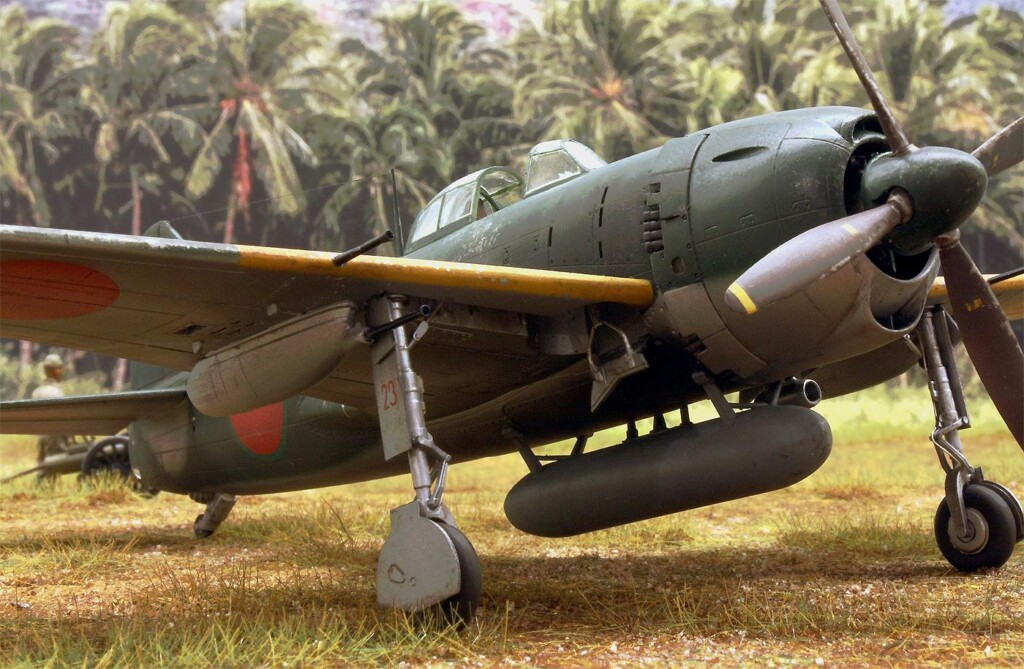

















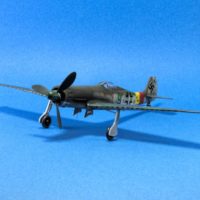
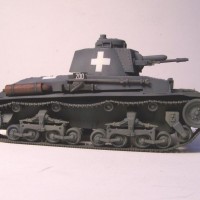
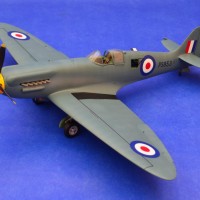
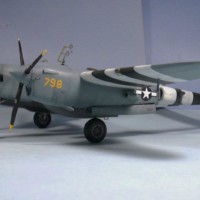
Let me be the first to say the modelling skill is second to none on this aircraft, and your photography is fantastic, @rosachsenhofer Roland!
And I'll second Robert's opinion! That looks great Roland! Spectacular build and photos @rosachsenhofer!
That looks great Roland! Spectacular build and photos @rosachsenhofer! 
I agree the paintwork and photography are outstanding. The build isn't too shabby either.
Another wonderful model and ditto article, Roland!
Congratulations!
What more to say, this is an awesome George, Roland @rosachsenhofer
Great build, great pictures and great article.
Well done.
Thanks for the excellent inspiration, @rosachsenhofer - I have this kit and it's been staring at me for more years than I care to admit, begging me to build it. With this as demonstration of the quality, that will be taking place this year.
This is definitely one of your great ones.
A wonderful article Roland. Great subject, fantastic model with brilliant pictures
Superlative build, Roland, made even more attractive by both settings. Are your bases all-purpose or specially built for this model? How did you get the grass base to blend so seamlessly into the (I suppose) photo palms? And the fire extinguisher cart adds another bit of verisimilitude! Congratulations on completing this truly awe-inspiring Shiden!
Great start to the new year, Roland, looking forward to George II.
Your Shiden combined with the palm tree background is dynamite looking Roland. Weathering is just right. Off to a winning new year’s start!
I say thank you all: your interested and interesting feedback honestly makes me very happy.
Christopher, the background/palms are a flat cardboard: this is one of the really very usable backgrounds from "Coastal Kits". Not exactly cheap, but of excellent quality and usability.
I have to marvel myself at how well the base plate I designed blends into the background. It is the same plate I used for the shots of the Ju 290 in front of the fir forest. Two contrasting climates, one plate!
I have populated the ground plate with electrostatically charged grass/vegetation, which is really rewarding and I think does quite well.
One more remark about the equipment in the picture: these, a Japanese fuel lorry and a fire extinguisher, are from the manufacturer Brengun and were a difficult but also very instructive build. Therefore, I would like to present them in a following small article.
Thank you all for the motivation!
As above ,great work!
Thank you Robert!
Spectacular work - the model, the paint, and the photography! Now I'm inspired to up my game!
Motivating words, thank you!
Wow - this one is a beauty! I love Japanese aircraft as there is so much you can do to bring them to life with weathering - even if monotone on color! You really brought this one to life, and the great photos set it off perfectly.
Thank you for your words, Greg!
Excellent work, Roland. The George preserved at Pensacola always gets me to stop and stare for a bit. I think I remember seeing one at Udvar Hazy in DC too, but it’s been a few years since I’ve been there.
Thank you John, you are happy to be able to see that!